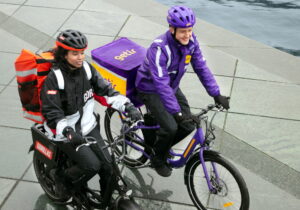by George Ioannou, Managing Partner at Foolproof, a Zensar company
Double the amount of UK consumers are buying groceries online compared to twelve months ago. For the past decade, we have been working with some of the UK’s leading grocers across their in-store and online experiences and developed a wealth of insight from grocery store customers. Based on our experience, here are ten ideas for grocers that will help improve the online grocery experience.
- Allow customers to relay preference
Substitutions for groceries ordered online are part of almost every purchase. The algorithms or people making the choices often create poor substitutions for the consumer. This includes excess items being given, different non-comparable items or those with non-suitable ingredients, being selected. The result is potential wastage, as well as frustration for customers.
To address this, allow customers to input their dietary requirements to make better and more informed substitution decisions.
- Allow customers to control their substitutions
Another common friction point with substitutions is that alternatives are not clearly communicated to the customer until it’s too late i.e., after picking in-store or at the point of delivery.
To resolve, ask a customer when choosing a new product; “if this product is out of stock, would you rather it be substituted with X or Y?”. This has indirect benefits because it increases the number of preference-based first party data points on a customer, and can be fed into recommendation engines and targeted marketing.
- Use customer understanding to inform branded item placements and recommendations
In-store customers are used to seeing visual prompts. Online, people are navigating digital space instead of physical space. Based on what we’ve observed from customers, they’re typically less forgiving to brands focusing too much on digital merchandising, or selling their own branded products.
For grocers wanting to push own-branded items, create bundled shopping baskets containing only own-branded products, as a more subtle and smarter way to cut friction and influence choice.
- Make merchandising at the checkout meaningful
Invasive merchandising is not the answer for profit because online offers lack the subtlety of in-store merchandising. Adding “before you check-out” creates unnatural breaks in journeys, whereas in-store these occur as part of queuing to checkout.
Brands need to focus on smart upselling such as proposing essential items missing from the basket such as bread and milk.
- Think discovery and not transaction
People are still drawn to pacing isles and discovering new and exciting items, and the experience of this lags behind online because online grocery focuses on convenience rather than discovery.
Curating online experiences to add moments of delight can gently nudge people towards new and repeat purchases. Instead of feeding suggestions at the point a customer is adding items to a basket or checking out, consider using other channels such as marketing points of presence to facilitate new product discovery.
- Allow for different addresses and multiple delivery slots
Restricting delivery slots irrespective of the logistical pains and not allowing items to be easily split into multiple baskets, removes a customer’s ability to manage multiple purchases at once. We’ve heard from customers who’ve been so frustrated they’ve left an online purchase journey.
There is an opportunity here to allow customers to easily select different addresses, at the point of checkout, and split baskets.
- Customers’ value fresh and correct produce
If you want to be known for quality, you need produce which lasts. Increased demand, Covid-19 and the strain of Brexit are not your customers’ concern.
Just as with notifications about substitutions, customers should be given the right to refuse items with very short shelf lives or items in greater or lesser amounts than they expected. It’s also worth remembering customers are often willing to pay more for local, better quality, produce which may help create more nimble fulfilment and supply chains.
- Splitting the bill
Many retailers only allow for card payments at the checkout from one cardholder. However, price splitting engines and technology providers like Splitwise allow those who live in shared accommodation to easily split their grocery expenditure without having to make multiple purchases or rely on bank transfers.
By facilitating this mode of payment, you make it seamless for the customers and can gain valuable data into your customers’ ways of living and how this impacts their purchases.
- Time is money
Not delivering on time causes problems. Customers value communication about lateness. When things are going wrong it’s best to turn to simple, clear and frequent communication to facilitate and ultimately make the difference between a good or bad experience. Brands seen to value customer’s time, build trusted relationships and have a greater likelihood of repeat purchase.
- More flexible order amendment
Customers’ expectations about the flexibility of, and control, they have over digital services has increased. This means reminding people about their order at certain preset times of the day with little understanding of their lives may frustrate or guarantee a reminder is ignored.
One way to approach this is by gathering data on how individuals want reminders communicated to them and then build systems around that data.
Wrapping up
Many of those with online grocery offerings will already have solutions to some of the issues we’ve raised above. However, every grocer has scope to improve and capitalise on the new behaviours customers are presenting.
As the call of the physical store beckons people away from their screen, having seamless online ordering which allows people to take greater control may make people return in the future.












